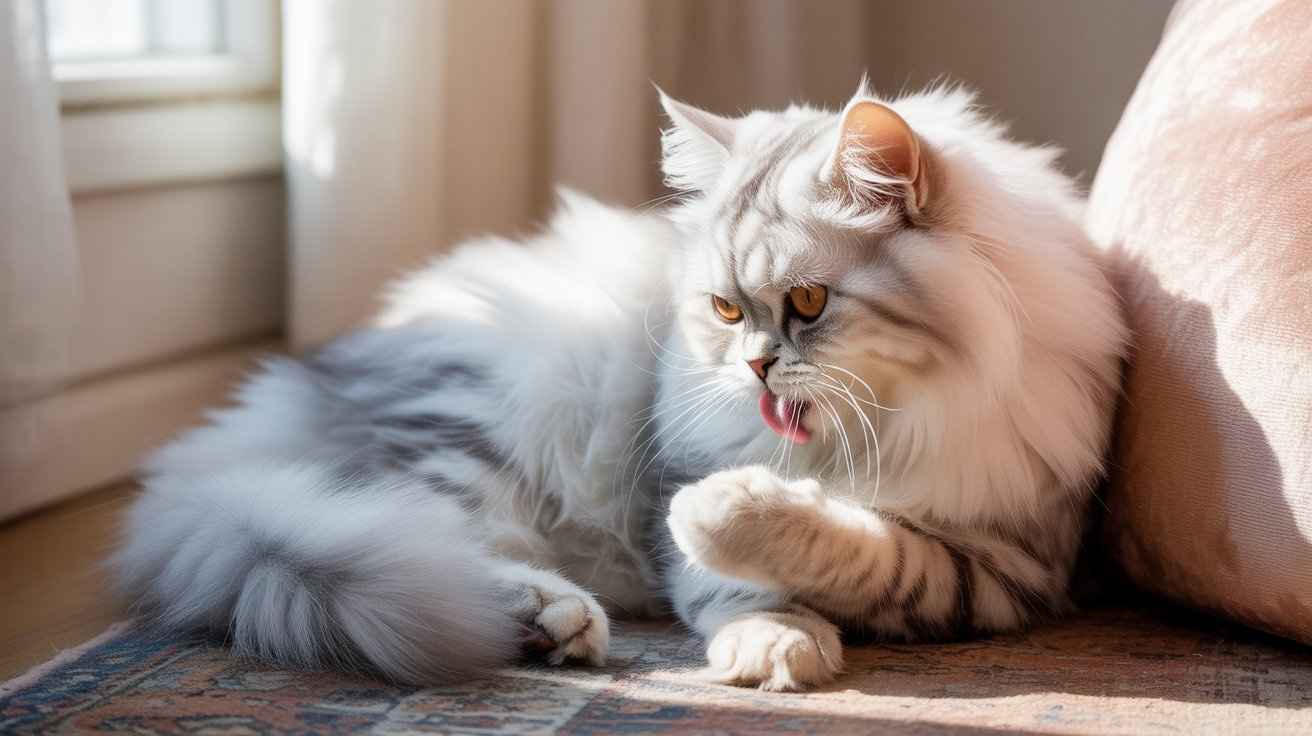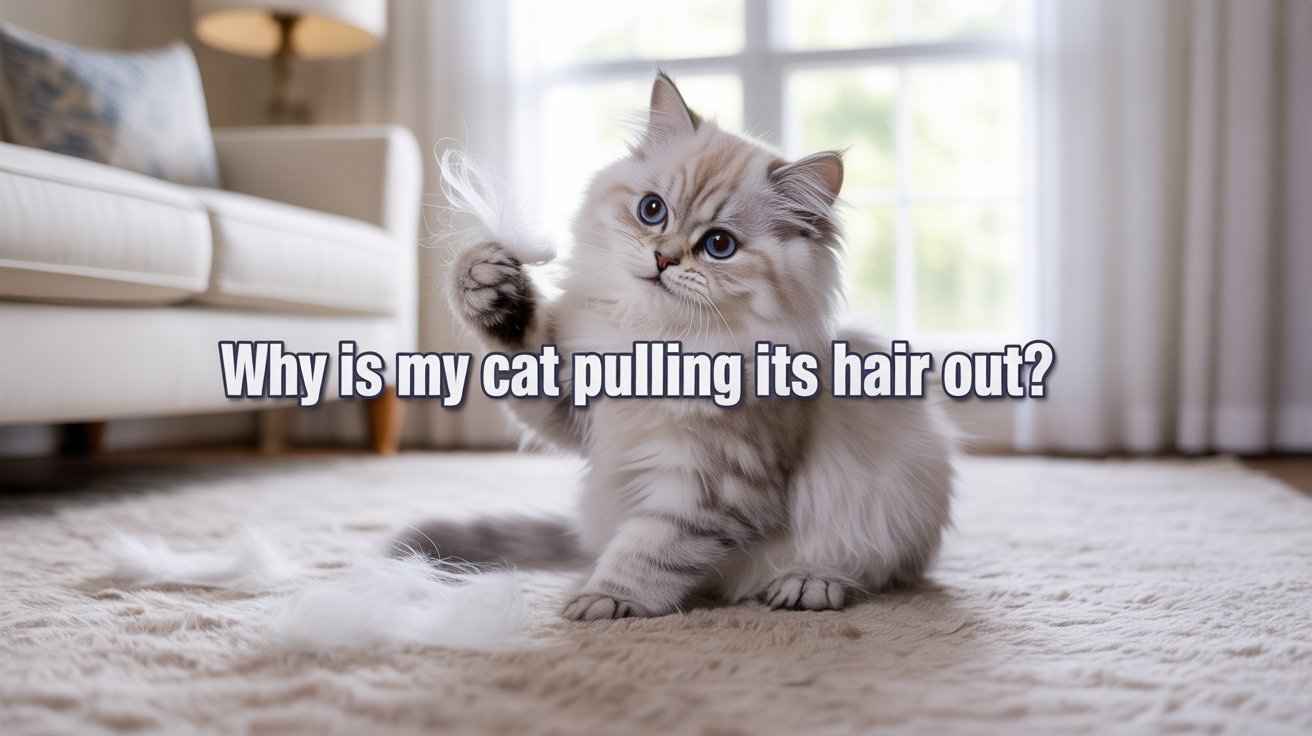Why Does My Cat Have So Much Static Electricity? There are six main reasons: dry skin, indoor heat, brushing friction, fabrics, low humidity, and health issues.
Why does my cat have so much static electricity?
If you’ve ever stroked your cat and felt a little zap, you may wonder, “Why does my cat have so much static electricity?” The truth is, static isn’t unusual and usually isn’t harmful.
Cats get static shocks when fur rubs against surfaces like carpet or blankets, especially in dry air. While it’s more common in winter, it can happen any time your home has low humidity.
The good news? There are simple ways to reduce static and keep your cat comfortable.
Why Does My Cat Have So Much Static Electricity? 6 Health Reasons
| Reason | How It Causes Static |
|---|---|
| Dry Skin | Makes fur rough and dry, so static charge builds up easily. |
| Allergies | Low body moisture causes skin to dry out, and fur to hold more static. |
| Parasites (Fleas, Mites) | Scratching damages fur and skin, making it more static-prone. |
| Poor Nutrition | Lack of omega-3 and oils keeps the coat from staying soft and moist. |
| Thyroid Problems | Hormonal imbalance can dry out skin and weaken fur health. |
| Dehydration | Low body moisture makes skin dry and fur hold more static. |
What Causes Static in Cats?
Cats can get static electricity for many reasons. Here are the most common ones:
- Dry air: In winter or when heaters run, the air gets very dry.
- Carpets and rugs: Walking or lying on them makes fur rub and build static.
- Synthetic fabrics, such as those used in blankets, clothes, or beds made of polyester, hold more static.
- Long or dry fur: Cats with fluffy coats or less natural oil are more susceptible to shocks.
- Rubbing and petting: When you pet your cat, the charge can jump to you.
These things make your cat’s fur crackle with little zaps.

The Science — Why Petting Makes Sparks
Static shocks sound scary, but they are simple science:
- Friction: When fur rubs on carpet, blankets, or clothes, it builds up energy.
- Energy storage: This energy stays on your cat’s fur until it finds a way out.
- Touch release: When you pet your cat, the stored energy jumps to your hand.
- Tiny spark: That jump is the “zap” you feel, a small burst of static electricity.
- Safe but annoying: The spark won’t hurt your cat, but it can surprise both of you.
When to Worry About Static
Static is usually safe, but it can sometimes reveal other issues. Watch for these signs:
- Dry, flaky skin: White flakes on fur or skin indicate that your cat’s skin is too dry.
- Too much scratching: If your cat keeps itching, it may be more than static.
- Red spots or sores: These can indicate that the skin is injured or infected.
- For matting or breaking: Weak hair can indicate skin or coat issues.
- Behavior change: If your cat hides or seems upset, check with a vet.

Easy Tips to Stop Cat Static
You can stop static shocks with simple steps:
- Use a humidifier: It adds water to dry air.
- Brushing your cat helps spread natural oils on their fur.
- Damp hands: Lightly wet hands before petting.
- Soft cloth wipe: Wipe fur with a damp cloth.
- Pet-safe spray: Use only sprays made for cats.
- Natural bedding: Choose cotton or wool over polyester.
- Fresh water: A fountain makes cats drink more.
- Fish oil: Vet-approved oils keep fur shiny.
- Touch metal first: Discharge your own static.
Grooming & Product Help

The right tools make static easier to fix:
- Humidifiers: Add moisture to the air and keep fur from drying.
- Leave-in sprays: Pet-safe conditioners reduce static on coats.
- Brushes: Natural bristle or metal combs spread oils better than plastic.
- Ionic brushes: Special brushes that claim to cut static; use with care.
- Cotton blankets: Use soft, natural bedding instead of synthetic fabric.
- Supplements: Vet-approved fish oil or omega oils keep skin and fur healthy.
These small items can make your cat’s fur softer and less static.
Quick Checklist for Cat Parents
Use this list to see if static is the problem:
- Is it winter or heater season? Dry air makes more static.
- Do you have carpets or rugs? They rub against fur.
- Are blankets polyester or nylon? These hold more charge.
- Is your cat drinking enough water? Dehydration makes fur dry.
- Do you brush your cat often? Brushing spreads natural oils.
- Tried a humidifier yet? It’s the fastest fix.
- Still lots of zaps? Ask your vet if the skin looks sore.

FAQ
Q1. Is static electricity dangerous for cats?
No. The little shocks feel strange, but they do not hurt your cat.
Q2. Why is static worse in winter?
Winter air is dehydrated, and heating makes homes even drier. This causes more static in fur.
Q3. How can I stop static quickly?
You can wipe your cat with a damp cloth or use slightly wet hands before petting.
Q4. Do long-haired cats get more static?
Yes. Fluffy coats trap more charge, so long-haired breeds often zap more.
Q5. When should I see a vet?
If you notice red skin, flakes, or sores, visit your vet for help.

Hi, I’m Sana Sajid!I’m the voice behind CatsCare.blog, sharing my 10+ years of hands-on cat care experience. With a diploma in animal care, I offer practical tips, trusted advice, and easy-to-follow guides to help keep your cats healthy and happy.
When I’m not writing, I spend time with my own cats or exploring the latest developments in feline health. Follow CatsCare.blog for expert insights and real cat stories!



![A sleek black cat with bright yellow eyes and a white chest patch is lying down in front of a blurred bookshelf filled with books. [Why Black Cats Have Yellow Eyes]](https://catscare.blog/wp-content/uploads/2025/10/Why-Black-Cats-Have-Yellow-Eyes.jpg)

